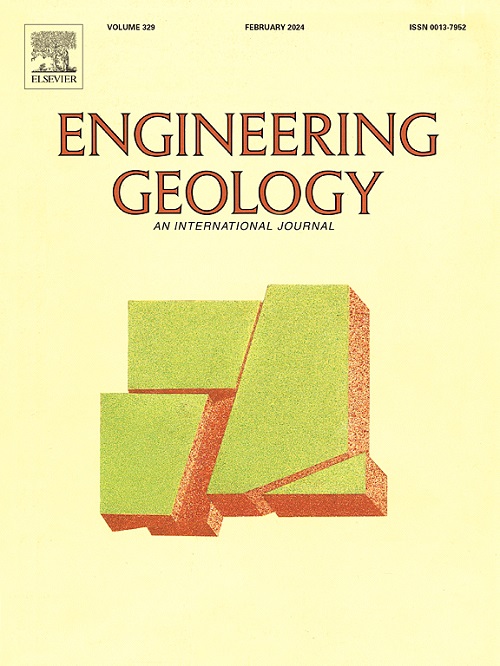Integrated geophysical data and Bayesian evidential learning approach for rockhead estimation and uncertainty quantification
IF 6.9
1区 工程技术
Q1 ENGINEERING, GEOLOGICAL
引用次数: 0
Abstract
Rockhead estimation and uncertainty quantification are essential for underground constructions such as tunneling. However, deep boreholes that are required for rockhead determination are not always available at every site due to their high cost and logistical challenges. Furthermore, geological profiling using solely borehole data can introduce biases, especially when boreholes are sparsely distributed or limited in coverage. This study proposes a method that integrates geophysical data with borehole data for rockhead estimation and uncertainty quantification. Seismic surface wave data, specifically the Horizontal-to-Vertical Spectral Ratio (HVSR), are utilized for rockhead investigation. The Bayesian Evidential Learning (BEL) method employs the rockhead positions determined using HVSR to update the initial rockhead estimates derived from boreholes. The proposed HVSR-BEL approach was initially validated using a hypothetical case and applied subsequently to two real sites in Singapore for rockhead estimation, with results verified against nearby boreholes. The analysis of geophone spacing indicates that the ratio of geophone spacing to site size of 0.3 is cost-effective for achieving accurate rockhead estimation. When the ratio increases from 0.3 to 0.4, the relative difference of uncertainty reduction is most significant, reaching approximately 28 %. For Site 1, the uncertainty in rockhead estimation along the geophone lines using the proposed method is significantly reduced by 40 % to 60 % as compared with prior variance estimates. For Site 2, uncertainty reductions in the range of 5 % to 40 % are primarily observed near the geophone locations. The accuracy of the estimated rockhead at both sites is acceptable, with an average absolute error of 2.7 m. The proposed HVSR-BEL approach can provide reliable estimation of rockhead profile.
求助全文
约1分钟内获得全文
求助全文
来源期刊

Engineering Geology
地学-地球科学综合
CiteScore
13.70
自引率
12.20%
发文量
327
审稿时长
5.6 months
期刊介绍:
Engineering Geology, an international interdisciplinary journal, serves as a bridge between earth sciences and engineering, focusing on geological and geotechnical engineering. It welcomes studies with relevance to engineering, environmental concerns, and safety, catering to engineering geologists with backgrounds in geology or civil/mining engineering. Topics include applied geomorphology, structural geology, geophysics, geochemistry, environmental geology, hydrogeology, land use planning, natural hazards, remote sensing, soil and rock mechanics, and applied geotechnical engineering. The journal provides a platform for research at the intersection of geology and engineering disciplines.
 求助内容:
求助内容: 应助结果提醒方式:
应助结果提醒方式:


